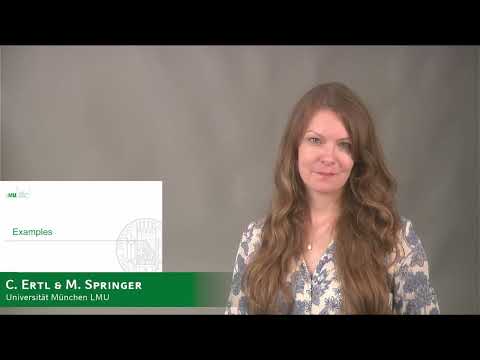 Speaker: Matthias Springer @MSpringer
Speaker: Matthias Springer @MSpringer
 Affiliation: Ludwig-Maximlians-University Munich
Affiliation: Ludwig-Maximlians-University Munich
Title: Construction Grammar, Literariness, and the Limitation Continuum of AI
Abstract (long version below): In this contribution will demonstrate, that literary texts whose style uses routine functional textual modules (textual procedures) without generating extensions of meaning or new constructions are of low literariness. Texts with a high level of literariness, on the other hand, intend to overcome established constructions and thereby generate competence-based creative coherence. This is tested by means of the Rasch model, in which the literariness is determined as the difficulty of an Item to be solved.

 Long abstract
Long abstract
In this contribution, we show that literary texts whose style uses routine functional textual modules (textual procedures) without generating extensions of meaning or new constructions are of low literariness. Texts with a high level of literariness, on the other hand, intend to overcome established constructions and thereby generate competence-based creative coherence. This principle can be represented linguistically against a construction-grammatical background and is also described in literary theory by de-automatization or defimiliarization.
In other words, literariness can be operationalized as a purposefully induced disruption of construction-grammatical form-meaning pairs. Focusing on meaning intensification also reduces the likelihood of producing texts with a high content of literariness algorhithmically, for example through artificial intelligence.
The thesis is that literariness overcomes construction-grammatically expectable textual routines at different text levels, coherently producing textual meaning at the level of the improbable, which corresponds to the principle of de-automatization and defimiliarization. This must be demonstrated both analytically and empirically. On the analytical level, those construction-grammatical patterns of narrative textual procedures have to be described which are subverted in texts with a high degree of poeticity.
For the empirical investigation, the reading of texts is considered as a task to solve a problem - starting from the assumption that texts with a low literary content are faster to receive than those with a high degree of literariness. The Rasch model is used as a measurement theory. It states that a test result is composed of the difficulty of a test task and the ability of a person to solve it. If the task difficulty outweighs the person ability, the probability of solving it will be low and, conversely, the probability of solving it will increase.
This leads to two hypotheses. First, that texts that follow the established text routines and accordingly have low literariness are considered “easy” and are likely to be received with low effort. On the other hand, texts that are characterized by a high degree of literariness and overcome expected text routines will be perceived as “difficult” and are highly likely to require a high degree of literary textual competence during their reception.

